DANIU 1M 4mm Banana to Banana Plug Shrouded P1050
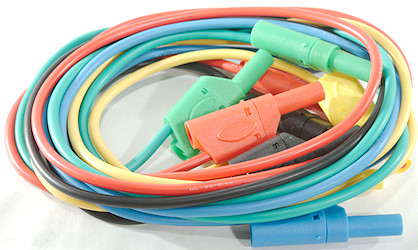
Official specifications:
- Color: Blue,Black,Red,Green, Yellow
- Current: 20A
- Voltage: 2000V
- Plug size: 4mm
- Length: 1M
- Wire gauge: 1mm2
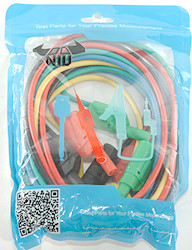
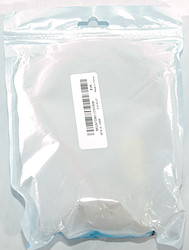
The plastic bag do not list any specifications.
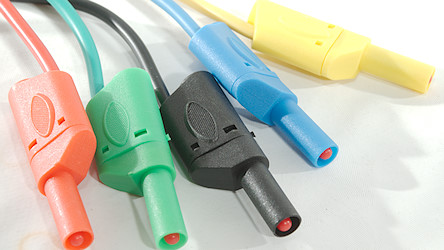
There is five different colors.

The plug are shrouded, this means they will only fit into connectors designed for that. They are used on multimeters, power supplies and a lot of other newer test equipment.
The shroud is 19.3mm long, this is slightly short, but means it works fine with multimeters that are designed for a slightly short shroud.

It is possible to stack the plugs. Other brands of banana plugs fit nicely into the back.

Non-shrouded banana plugs will. of course, also fit in the back, but the shrouded version cannot be plugged into the back of ordinary banana plugs.
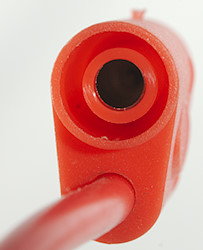
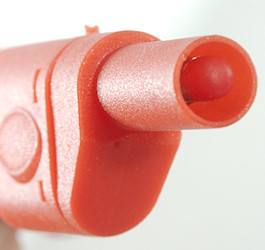
The tip is isolated, this is good when working with mains voltage.
Test and measurements

The wires are about 95cm measured from end of strain relief to strain relief at the other end (i.e. strain relief not included).
I measured ohm by using the "Front+back" setup, this gives the resistance of the wire and internal connection to the plug, this is 20mOhm for one cable, this gives an estimated 18AWG or 0.8mm2 for the cable.
The "All" row is all five cables plugged together in one long string, this means 5 times cable resistance and 4 times contact resistance. The contact resistance from cable to cable is much better than to my sockets.
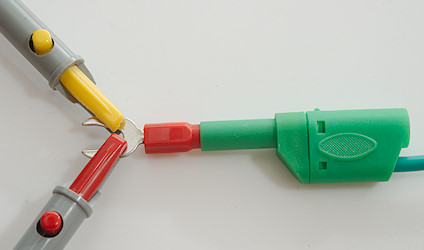
When measuring internal resistance I use a 4 terminal setup, but this do not eliminate the resistance between the socket and the plug. The red alligator clip supplies current and the yellow is used to measure voltage.
This setup was used for "Front 10A" column.

To eliminate the contact resistance I can use both ends of the plug, this way I only measure the actual cable resistance.
This setup was used for "Resistance" and "Front+back 10A" column.
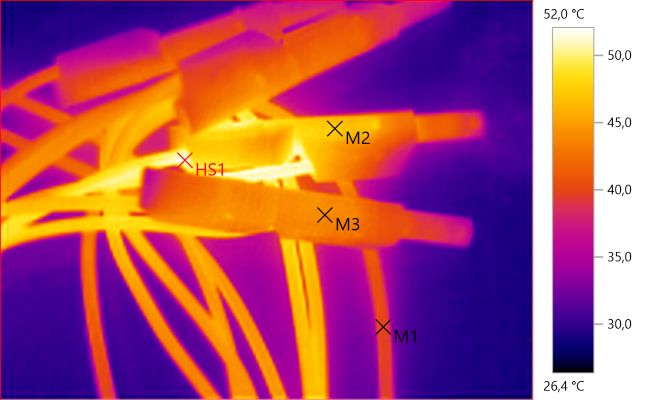
M1: 39.9°C, M2: 47.4°C, M3: 43.8°C, HS1: 52.0°C
I uses 10A current for 15 minutes before taking the temperature photo.
The contact resistance increases the temperature of the connectors.
It looks like the maximum temperature increase is about 20°C, it would be about double with 15A and four times with 20A, I would be careful with anything above 15A.
With 10A current the voltage drop increased from 1159mV to 1179mV after 15 minutes
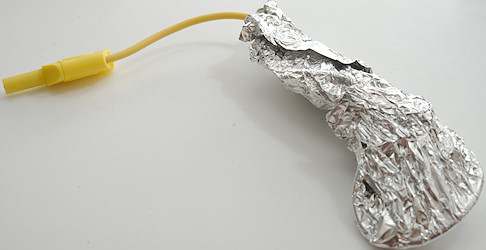
This cable can be used on mains voltage, I did a isolation test from the aluminium foil to the conductor with my usual 4242 VDC (Same as 3000 VAC) and there was no problem (I did put the foil directly across the front end of the plug).
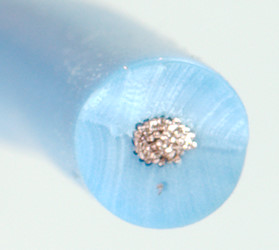
The isolation is fairly thick. With my caliper I measured the outer diameter to 3.8mm. It is not high temperature resistant, a solder iron at 150°C can mark it, at 350°C it will slowly melt the isolation.
For high voltage test leads I do prefer double isolation, that means two separate layers around the copper, the inner one is usual white. This means if at any time there is a scratch on the cable that looks white, it is time to replace the cable.
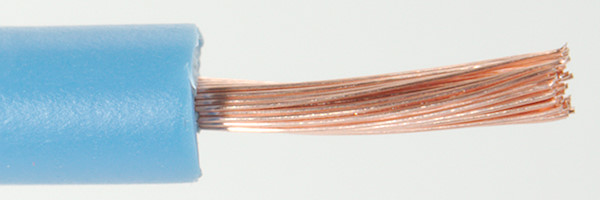
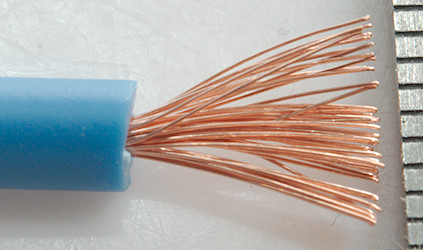
It do have fairly many thin strands, making the cable flexible.
Conclusion
These test leads looks good, the resistance is low, but there can be some contact resistance.
When working with voltage above 50V it is a very good idea to use this type of test cable for better safety.
Notes
The cables was supplied by Banggood for review
















